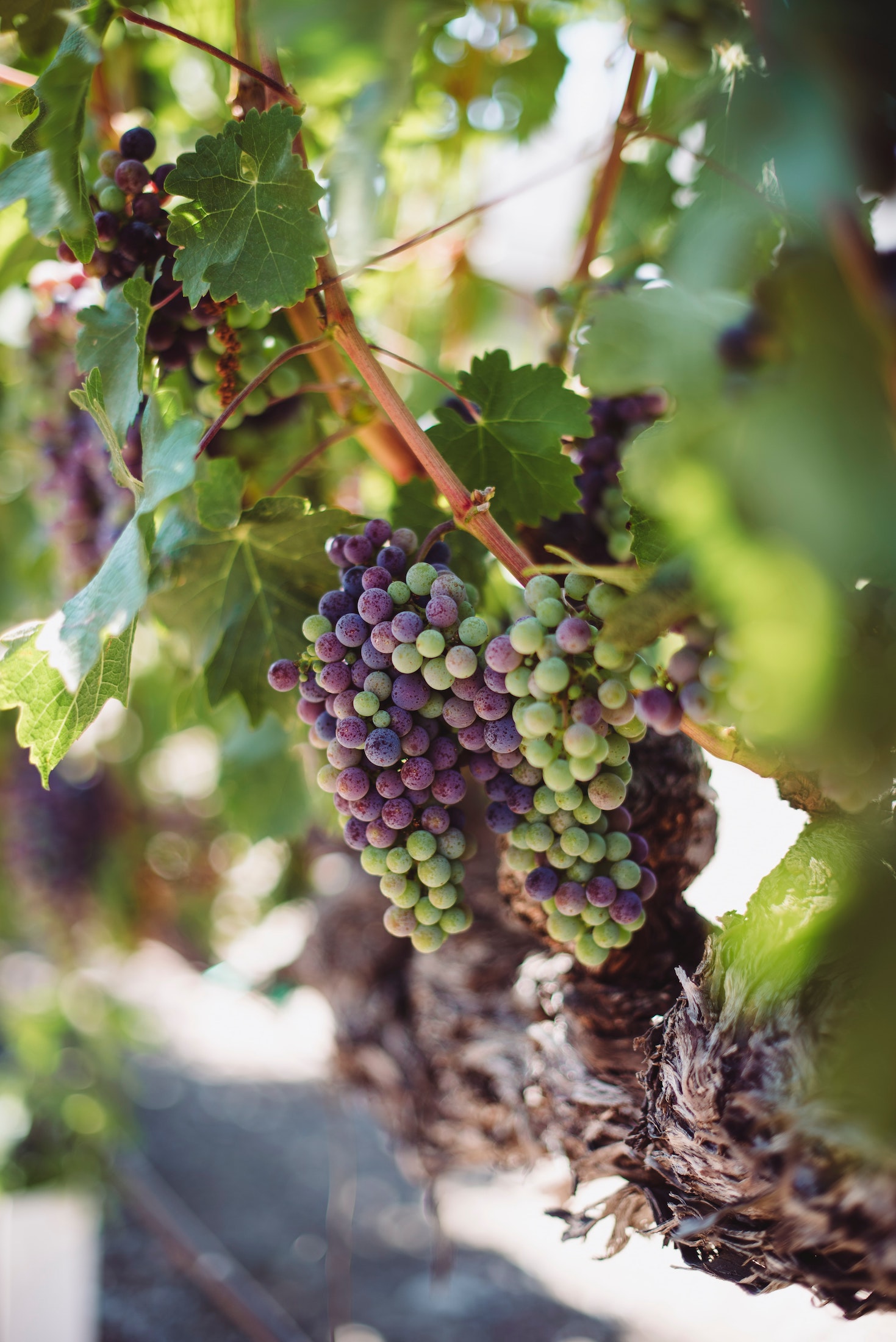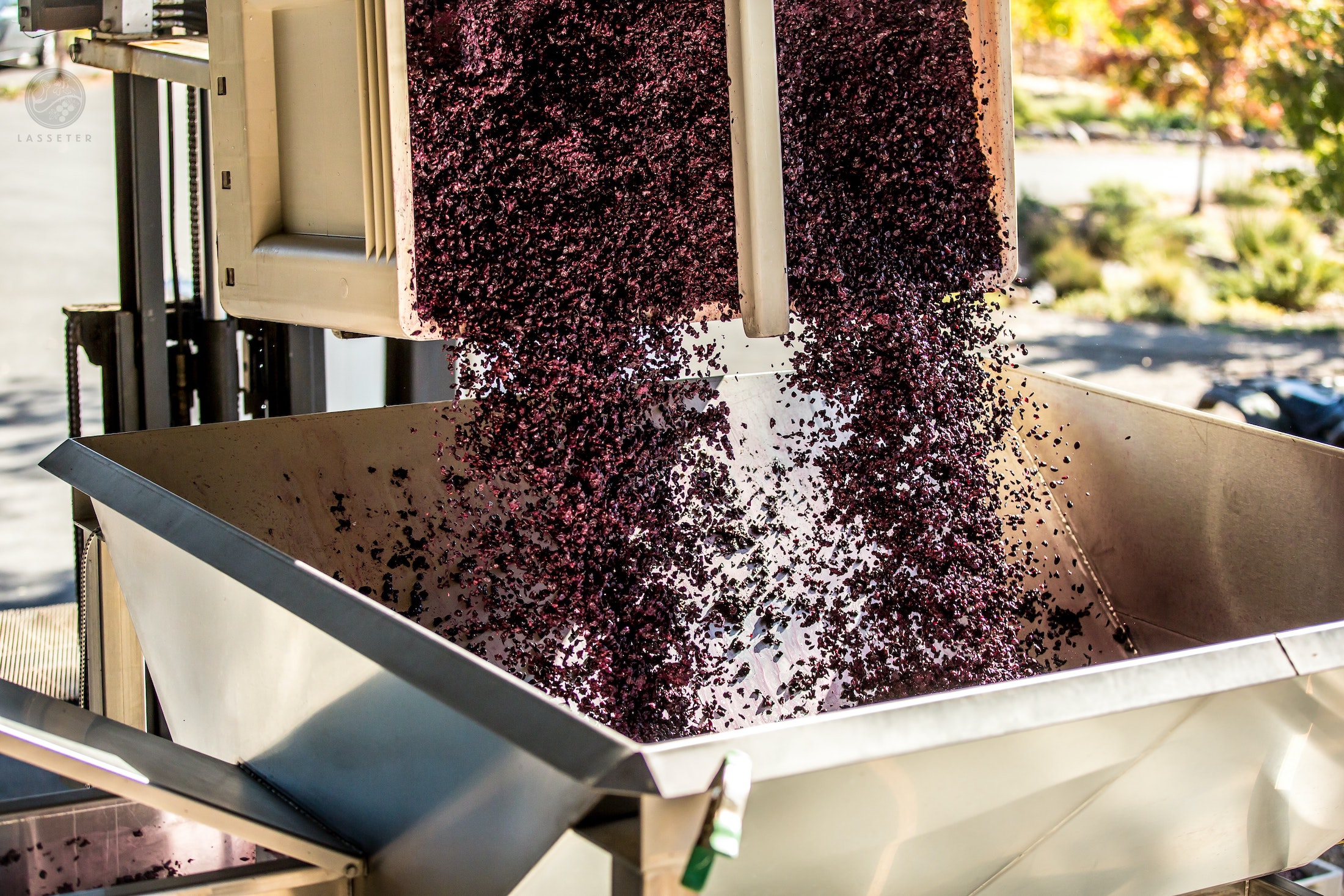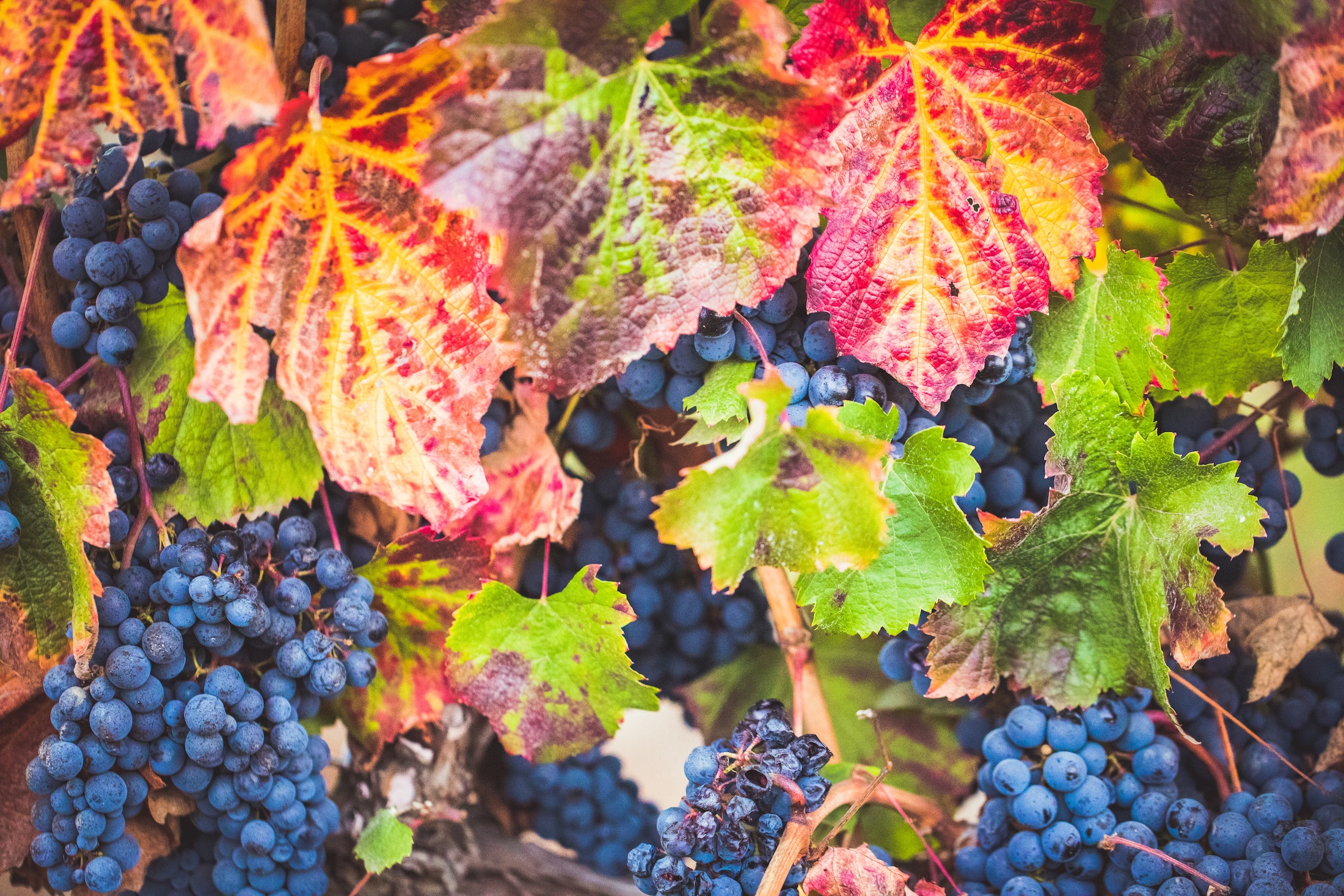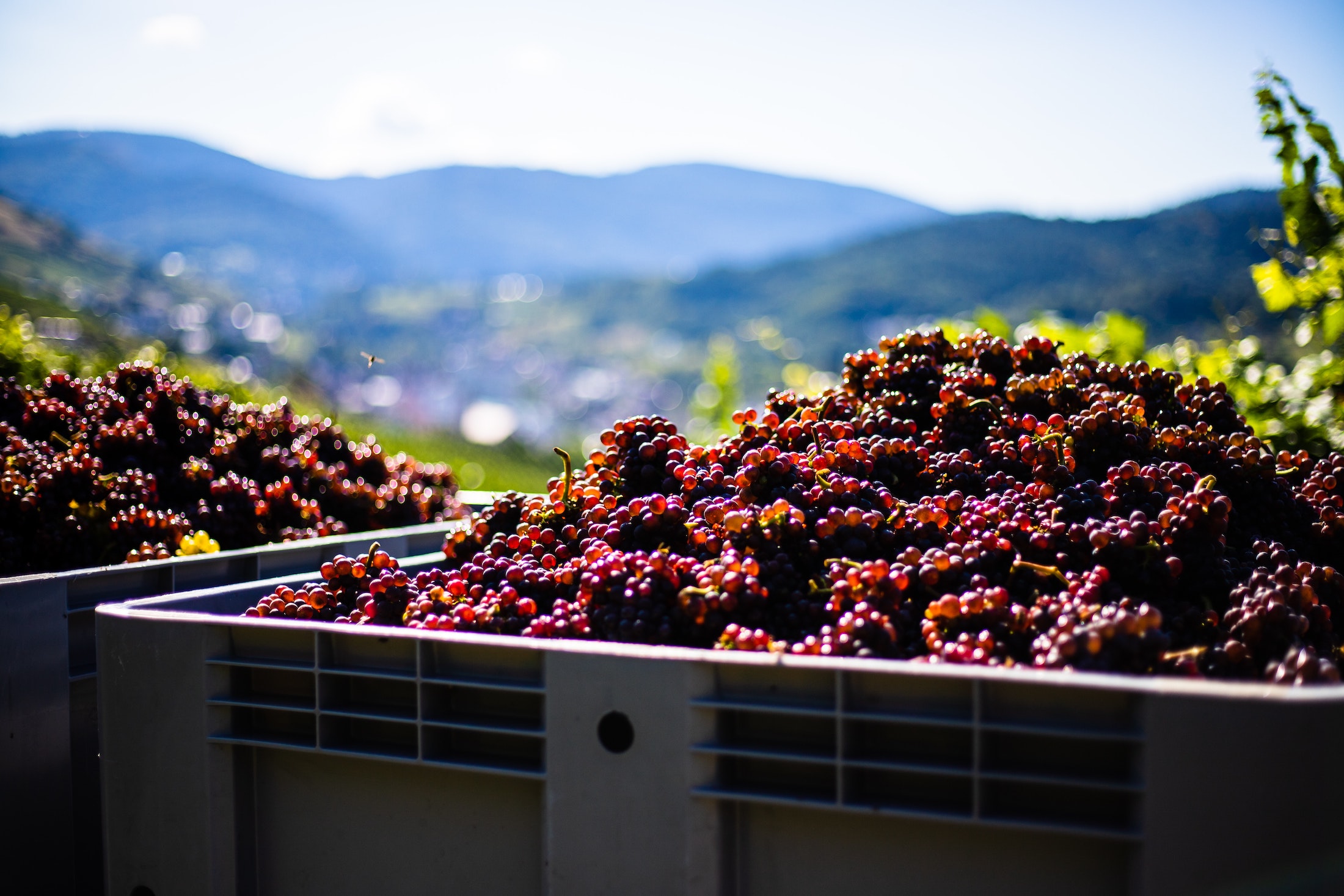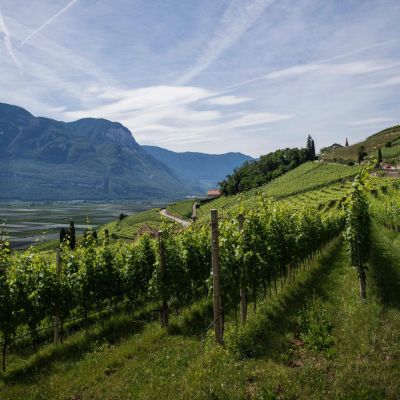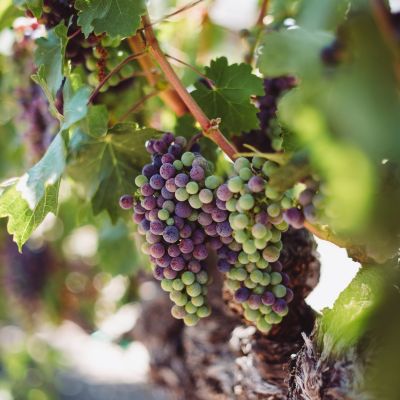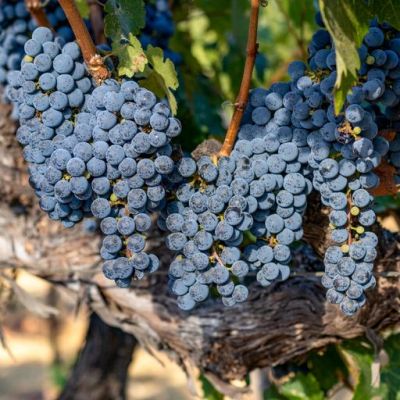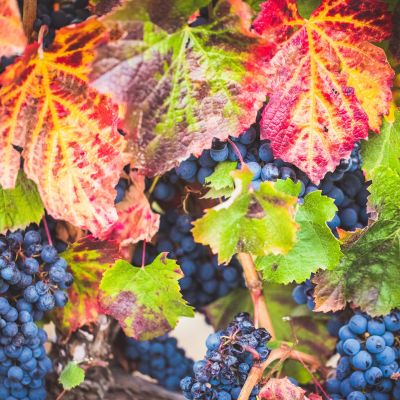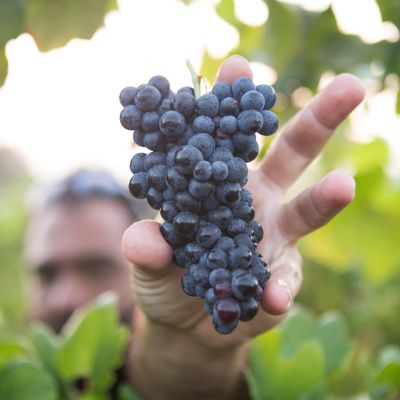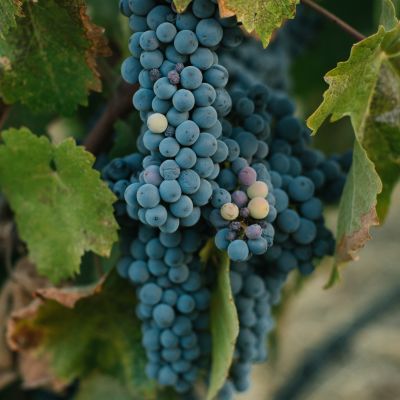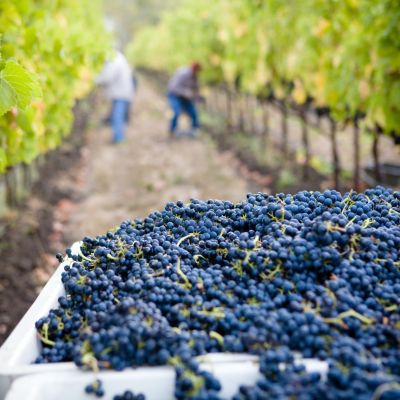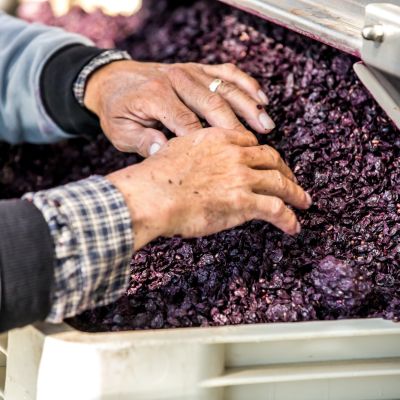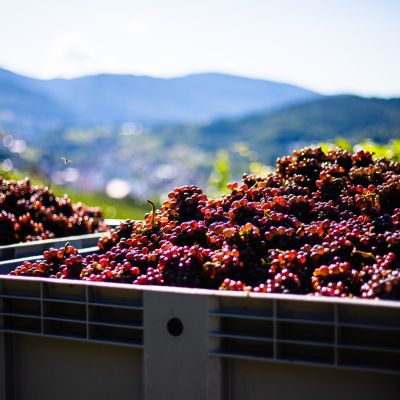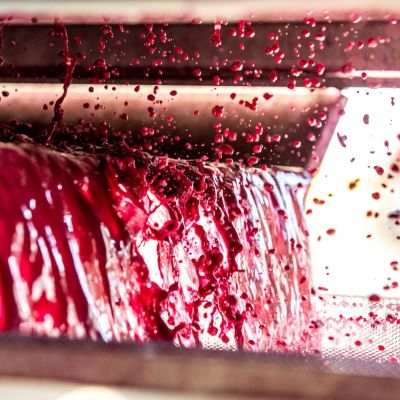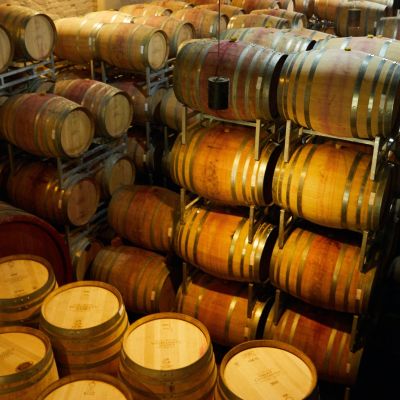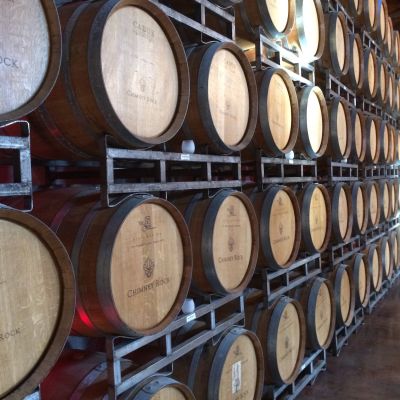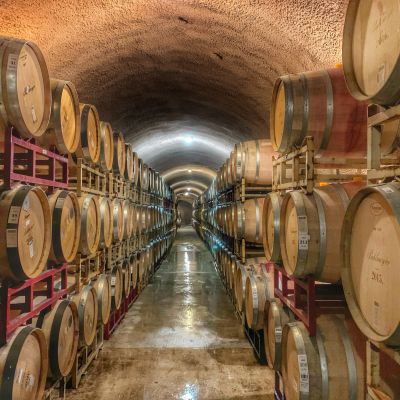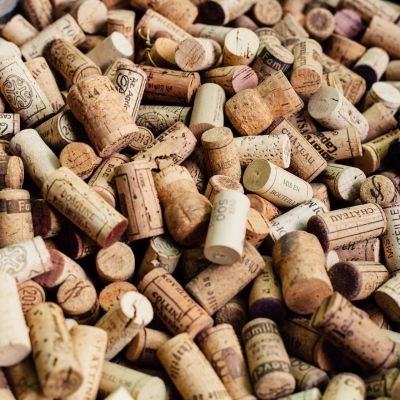The vine – history written by seasons
Throughout the year, winegrowers are constantly busy with their vines. Through all four seasons they put into practice ancient techniques combined with the latest discoveries to produce high quality wines of reputation.
Behind each tasting is a year of work ! A summary of the seasons below:
- The first quarter of the year is the vine waking up, farmers prepping the medium, and early rapid vine growth.
- The second quarter of the year includes plush green growth in warmers temperatures that allow flowers to begin forming.
- Hard green grapes form in the third quarter of the year, changing colors as they near harvest.
- Harvesting is a process that can take several months in the fall, it all comes to a head as we prepare for fermentation.
A journey through time: the Vine’s lifecycle:
The vine is a plant of the Vitis genus and is a climber. Cultivated by human hand, there are a great many species, among them Vitis vinifera, which provides all the grapes used in Europe,united state winegrowing region.
Without human intervention, it would continue to grow in an uncontrolled manner. Pruning and trimming forces the plant to focus on producing better fruit rather than spreading.
Vines mainly grow in hot or temperate regions.
A Perennial Plant:
The grapevine is a perennial plant, or one with an annual cycle. It comes back to life at the end of the winter months. When the land heats up and the sun is more present, the sap rises and forms droplets on the tips of the pruned branches. Some say when this happens that the vine is “weeping”. This is the sign of a new vintage coming into being. The cycle ends in the fall, after the harvest. When the leaves drop, the vine falls dormant once again, preparing to burst back into life in the spring.
…When the land heats up & the sun is more present, the sap rises & forms droplets on the tips of the pruned branches. Some say the vine’s “weeping” – a sign of a new vintage born!
Please continue to read below to see how we have captured through the seasons how the grapevine progresses. We have taken a month by month approach to discuss the details of the climate at that time of year, the plants growth state, and how to intervene and help the plant move in a direction that will support it best for higher yields stronger quality in the months of harvest.
January
The vines start the New Year in much the same condition as the rest of us; fast asleep. The leaves have long since gone, and the green canes that grew in the summer turned brown and woody. Any extra carbohydrates will be stored deep in the trunk of the vine and this is a sign that winter pruning can begin. Traditionally pruning starts on the 22nd January . Winter pruning is an arduous but necessary task as it determines the number of buds left on the vine for this years growing season and subsequent harvest. Not the most thrilling of jobs in the cold winter but there’s little rest when it comes to the production of good quality wine!
February
After winter this is the last month of dormancy for the vines; sap is just starting to stir and circulate in the plant . The soil should be freshly ploughed, allowing aeration and deeper penetration for rainfall. Growers will be adding fertilizers and organic matter that will gradually break down, adding nutrients for the plants rapid growth in Spring. This is also the last time of the year to finish repairs on trellising systems and to make any major changes for the coming growing season; once it starts, it goes very quickly indeed!
March
This is typically a month of two halves. The first half includes the final preparation for spring, including planting new vines in areas that are free from frost-danger. Spring does not officially start until the 21st March but the unpredictable variation on temperature has meant this can often come sooner. As the weather warms up in the second half of the month, so does the soil temperature and several things start to happen. The new canes will start to produce sap and the vines will come out of dormancy as the temperature of the soil reaches around 50 F . The winter buds will slowly expand and become woolly, leading to eventual budburst . Spring is finally here!
April
This will be a time of rapid growth in the vineyard, not only in the vine but all indigenous plants or cover crops as well. In most vineyards this will be a good time to start spraying plants against various insects and diseases, as well as considering some extra nutrients for the soil as the vine will typically outstrip its available resources, especially on soils with poor fertility. Weed control is paramount at this stage as well, so as not to deprive the vines of the nutrients it so badly needs at this time. It has to be said, this is typically a beautiful time to visit the vineyards as the land is alive with the activity of farmers, and the emerging green shoots are beautiful to look at!
May
Much the same as April, with a great deal of green growth and management of the soil and canopy to be done. With warmer temperatures, buds are starting to develop earlier than usual and the late Spring frosts are particularly harmful, wiping out not only the potential crop but in severe cases, even limiting the vines ability to recover and produce extra buds. There’s still lots of work to be done to prevent these outbreaks of frost and to shelter as much of the vineyards as possible. most vignerons will be up all night, lighting fires and trying to keep cool air from settling. A hard month lies ahead.
June
Another vital month in the annual cycle of the vine and a beautiful month to be in Napa! The vines will still be growing green material at a rapid pace and more importantly, the plants will start to flower. This is the process where the embryonic grape clusters pollinate and are fertilized; without this process, there can be no grapes and therefore no wine. The plants are very vulnerable at this time of the year, in particular to short and violent changes of weather, which seems to continue year after year. Without appropriate flowering, yields will be drastically low . June is the ideal month to visit a winery; there is plenty of activity in the vineyards, the plants are looking stunning with their shoots reaching for the sky and the small clusters flowering across the vineyards. A wonderful day out and a great opportunity to meet some local wine-makers!
July
A baking hot month under the Napa valley sun for both us and for the grapes; , As flowering is concluded at this stage, the vines are suddenly the proud parents of small, tightly knit bunches of hard, green grapes. This is the first indication that the grower has of the size and quality of the crop for the year and some will even begin ‘green harvesting’ at this stage, which is the act of removing some bunches of grapes in order to help concentrate the remaining bunches. Depending on how warm it is, veraison can begin in late July or early August, that is to say, the changing of the color of the grapes to white and red depending on their variety.
August
Traditionally is a hot month in Napa valley . However, for immobile vines it is a particularly important month due to the phenomenon of veraison. This is the onset of berry ripening and also when the pigmentation starts to form in red grapes, leading to the distinction in color between the different types of grapes. Red grapes will start to turn a light berry-red color, white grapes will start to turn yellow and golden. This is a key part of the life cycle of the vine and the vignerons will be hard at work to ensure it goes smoothly. Leaves will be cut away to expose grape clusters to extra sunshine and sometimes bunches of grapes will be removed in a process known as ‘green harvesting’ in order to concentrate sugars in the remaining bunches. Eyes will be cast towards weather forecasts between now and harvest, as this 2-3 month period is vitally important to get quality grapes and therefore, the potential to make quality wine.
September
The harvest is upon us!, there are various different stages of harvest. By this point, grapes grown for sparkling wine are already mid-way through harvesting as they tend to be picked slightly earlier to retain the high acidity that is prized for ageing potential in older wines and freshness in younger wines. A lot of white wines aiming to retain bright fruit flavors and high acidity will also be being picked, particularly in hot regions where the grapes can easily over-ripen and produce wines with unbalanced flavors and even some light reds, particularly Tempranillo may well undergo an early harvest. Vignerons and wine-makers alike will keep a wary eye on the sky, as excess rain during harvest can induce rots, fungi and often dilute the flavors they have worked so hard to nurture. Quality-minded producers will be spending a lot of money to hire trained pickers to gently harvest the grapes before transporting them in small, 30 LB boxes to avoid crushing the grapes and losing precious flavors and aromas to oxidation. An entire years worth of effort comes down to these next few crucial months, as the saying goes: ‘It’s possible to make very bad wine with good grapes, but it’s impossible to make great wine with bad grapes!”
November
This is typically the last month of the harvest for most wine-makers and indeed, practically all the white grapes and most of the reds will have been picked, pressed and begun fermentation already, with the exception of some late-ripening varieties or those small pockets of grapes in particular micro-climates. The big task in November is making the wine; with winery space at a premium and stainless steel tanks, barrels and concrete eggs all full of fermenting wine that has to be monitored constantly in order to make sure the temperatures, nutrient levels and volatile components are all in check. It can be a pretty stressful place to be! Now the time in the vineyard is more or less over, biology takes a back-seat to chemistry as science and artistry vie for control of the process. If the harvest was good and a good crop of healthy grapes was brought in, the sky is the limit for a skilled wine-maker. If the yield was low and/or poor quality due to rots, fungi, weather conditions or unforeseen circumstances then the wine-maker will have a challenge on their hands to turn it into a good quality wine .
December
The harvest is well and truly over! The grapes have been picked and the main focus will now be in the winery itself, as wines finish fermentation at different periods, destined for different styles of storage and ageing before being included in any final blends. In the vineyard, this is an excellent opportunity to prepare for the next year, with some growers choosing to clean up any unwanted weeds that have been growing throughout the harvest, wash the hard wood of the vines with a copper-based fungicide and cultivate the soil to allow the winter rains to soak in deeply. General maintenance work may start, but nearly all efforts will be focused towards the newly fermented wine and perhaps even an opportunity to take a break every now and again; certainly deserved after the strenuous efforts of the harvest!


